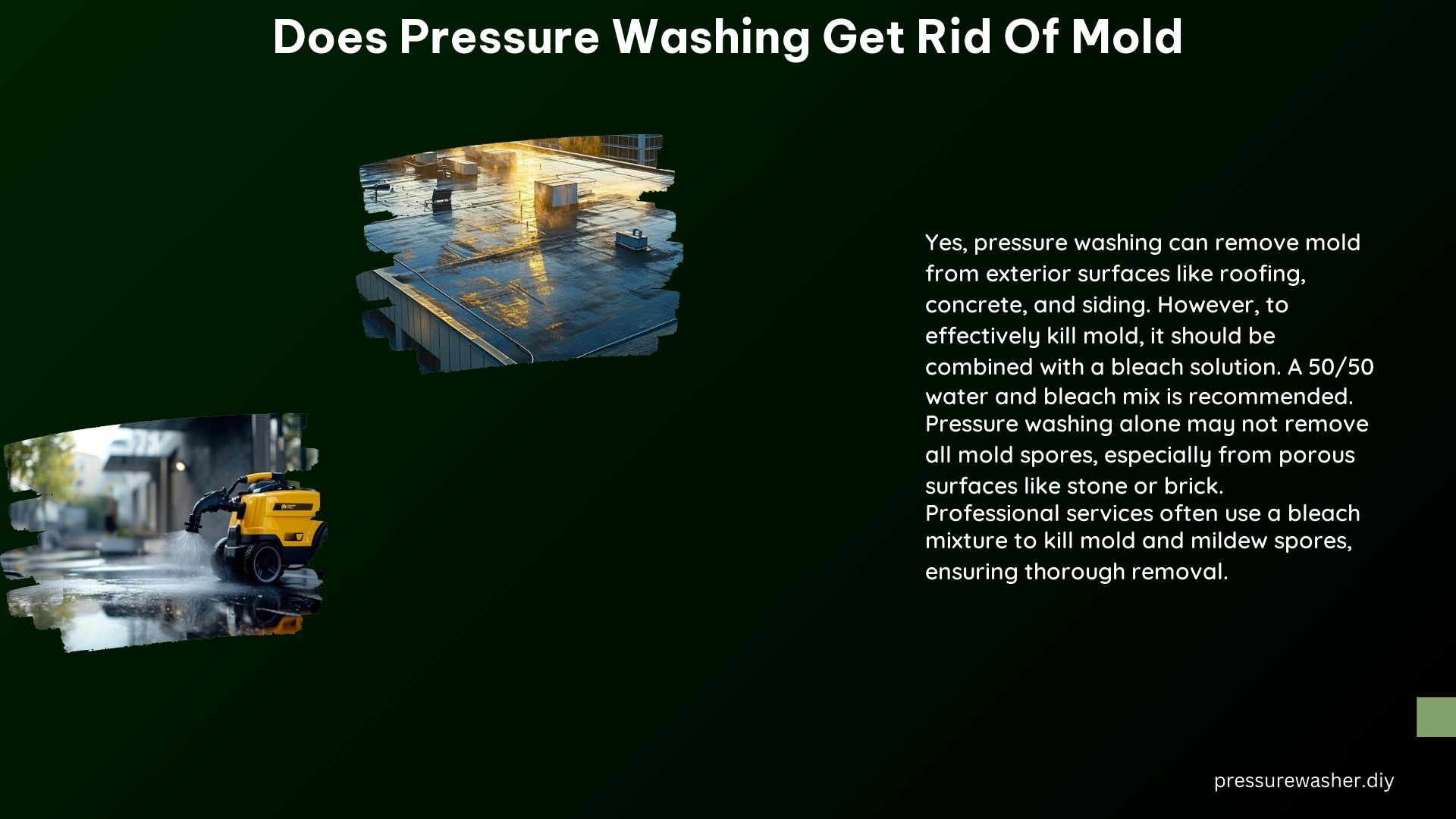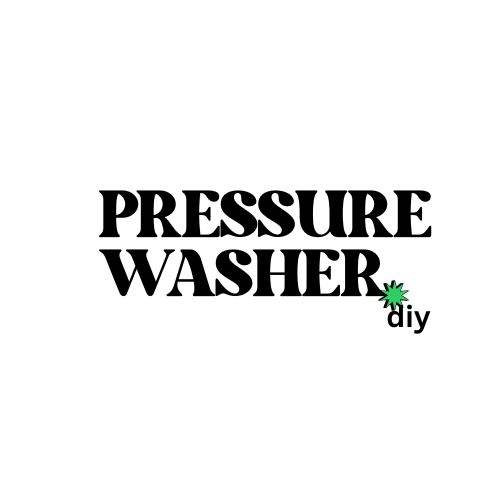Mold can be a persistent and unsightly problem, affecting various surfaces around the home, from siding and roofing to concrete and patios. Pressure washing is a popular and effective method for removing mold, but it’s crucial to understand the proper techniques and precautions to ensure successful and safe mold removal. In this comprehensive guide, we’ll explore the effectiveness of pressure washing in eliminating mold, provide detailed technical specifications, and offer valuable DIY tips to help you tackle this problem effectively.
The Effectiveness of Pressure Washing in Mold Removal
Yes, pressure washing can be a highly effective way to remove mold from a variety of surfaces. The high-pressure water stream can dislodge and wash away mold growth, making it an ideal solution for surfaces like siding, roofing, concrete, and patios. However, it’s important to note that pressure washing alone is not enough to fully eliminate mold. To ensure the mold is not only removed but also killed to prevent regrowth, it’s essential to combine pressure washing with a bleach solution.
Technical Specifications for Pressure Washing Mold

Pressure Washer Settings
When it comes to pressure washing mold, it’s crucial to use the right pressure settings to avoid damaging the surface. For most mold removal applications, a low to moderate pressure setting is recommended, typically between 1,500 to 3,000 PSI (pounds per square inch). This range is suitable for most surfaces, including wood, siding, and concrete, without causing any significant damage.
Bleach Solution
To effectively kill mold spores and prevent regrowth, you’ll need to create a bleach solution to apply before pressure washing. A 50/50 ratio of bleach to water is generally recommended. This solution will help to disinfect the surface and ensure that the mold is not only removed but also eliminated.
Surface Preparation
Before pressure washing and applying the bleach solution, it’s essential to ensure the surface is clear of any debris or dirt. This will help the bleach solution and pressure washing to be more effective in reaching and removing the mold growth.
Safety Precautions
When dealing with mold and bleach, it’s crucial to take proper safety precautions. Wear protective gear, including gloves and a mask, to avoid exposure to mold spores and bleach fumes. Ensure the area is well-ventilated, and take care to protect nearby plants and grass from the bleach solution.
DIY Tips for Pressure Washing Mold
Test a Small Area
Before applying the bleach solution and pressure washing the entire surface, it’s a good idea to test a small, inconspicuous area first. This will help you ensure that the solution and pressure settings do not cause any damage to the surface.
Use a Soft Washing Method for Wood Surfaces
For wood surfaces, such as siding or decking, it’s recommended to use a soft washing method to avoid damaging the wood. This involves using a lower pressure setting and a gentler cleaning approach.
Protect Plants and Grass
When using a bleach solution, it’s essential to take precautions to protect any nearby plants and grass. The bleach can be harmful to vegetation, so it’s important to cover or shield these areas during the cleaning process.
Addressing Underlying Moisture Issues
It’s important to note that while pressure washing can effectively remove mold, it’s crucial to address any underlying moisture issues that may have caused the mold growth in the first place. Mold thrives in damp environments, so identifying and resolving the source of the moisture problem is essential to prevent future mold growth.
Conclusion
Pressure washing can be a highly effective method for removing mold from various surfaces, but it must be combined with a bleach solution and proper safety precautions to ensure successful and safe mold elimination. By following the technical specifications and DIY tips outlined in this guide, you can tackle mold problems effectively and prevent future recurrence. Remember to always address any underlying moisture issues to maintain a mold-free environment.
Reference:
- https://www.pressurewashersdirect.com/stories/181-How-to-Remove-Mildew-from-Your-Siding.html
- https://spaceclean.net/faqs-about-pressure-washing/
- https://powerwashinglansing.com/blog/does-power-washing-remove-mold/
- https://www.reddit.com/r/handyman/comments/10xs7a0/will_pressure_washer_remove_this_mold_or_should_i/
- https://www.thehulltruth.com/boating-forum/784095-pressure-washing-get-rid-mold.html
